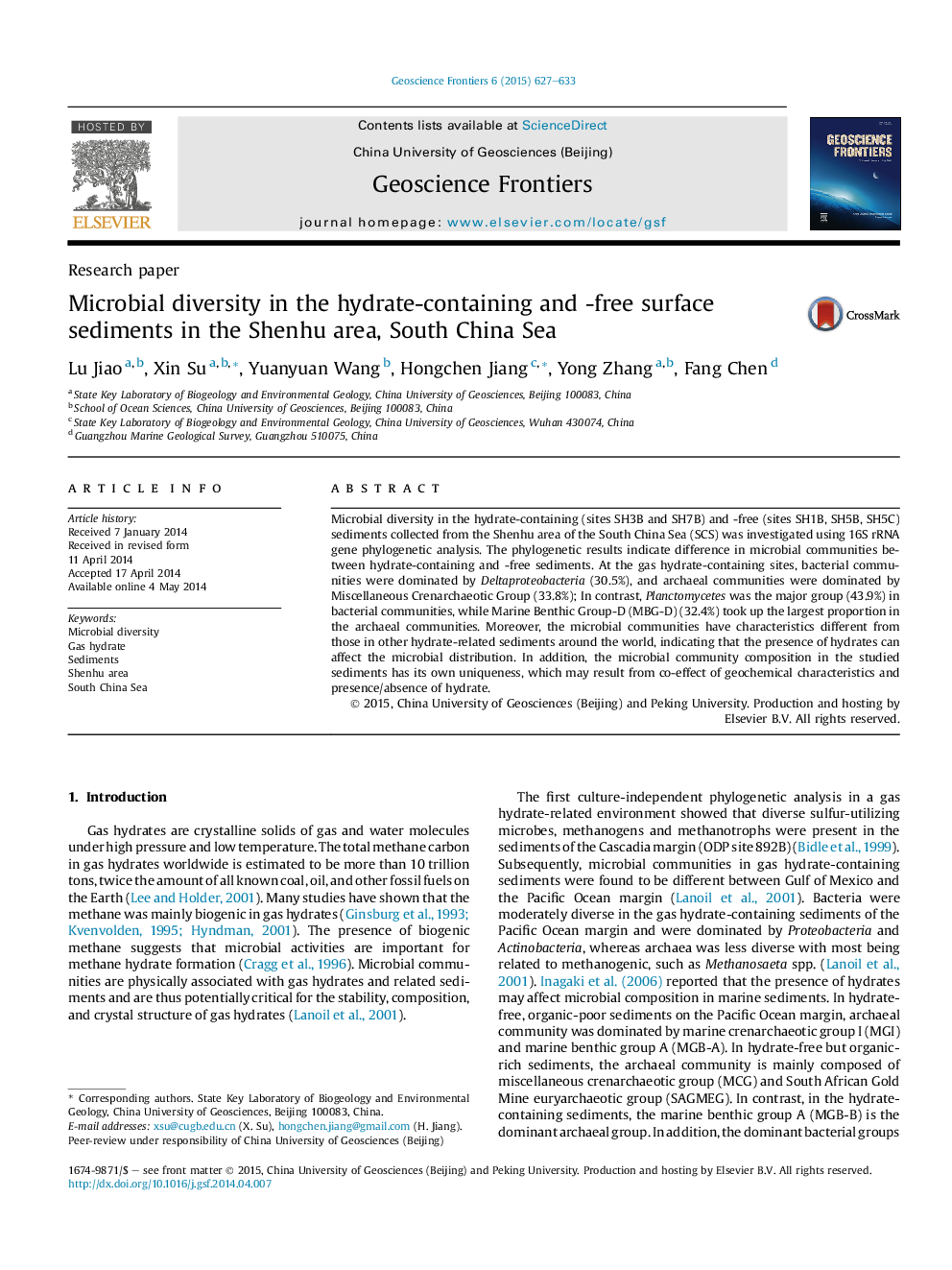| Article ID | Journal | Published Year | Pages | File Type |
|---|---|---|---|---|
| 4681612 | Geoscience Frontiers | 2015 | 7 Pages |
•South China Sea microbial community characteristics are different from hydrate-related sediments elsewhere.•16S rRNA gene phylogenetic analyses indicate microbial diversity between hydrate-containing and -free sediments.•Statistical analysis suggested that some geochemical parameters may control different microbial groups.
Microbial diversity in the hydrate-containing (sites SH3B and SH7B) and -free (sites SH1B, SH5B, SH5C) sediments collected from the Shenhu area of the South China Sea (SCS) was investigated using 16S rRNA gene phylogenetic analysis. The phylogenetic results indicate difference in microbial communities between hydrate-containing and -free sediments. At the gas hydrate-containing sites, bacterial communities were dominated by Deltaproteobacteria (30.5%), and archaeal communities were dominated by Miscellaneous Crenarchaeotic Group (33.8%); In contrast, Planctomycetes was the major group (43.9%) in bacterial communities, while Marine Benthic Group-D (MBG-D) (32.4%) took up the largest proportion in the archaeal communities. Moreover, the microbial communities have characteristics different from those in other hydrate-related sediments around the world, indicating that the presence of hydrates can affect the microbial distribution. In addition, the microbial community composition in the studied sediments has its own uniqueness, which may result from co-effect of geochemical characteristics and presence/absence of hydrate.
Graphical abstractFigure optionsDownload full-size imageDownload as PowerPoint slide
